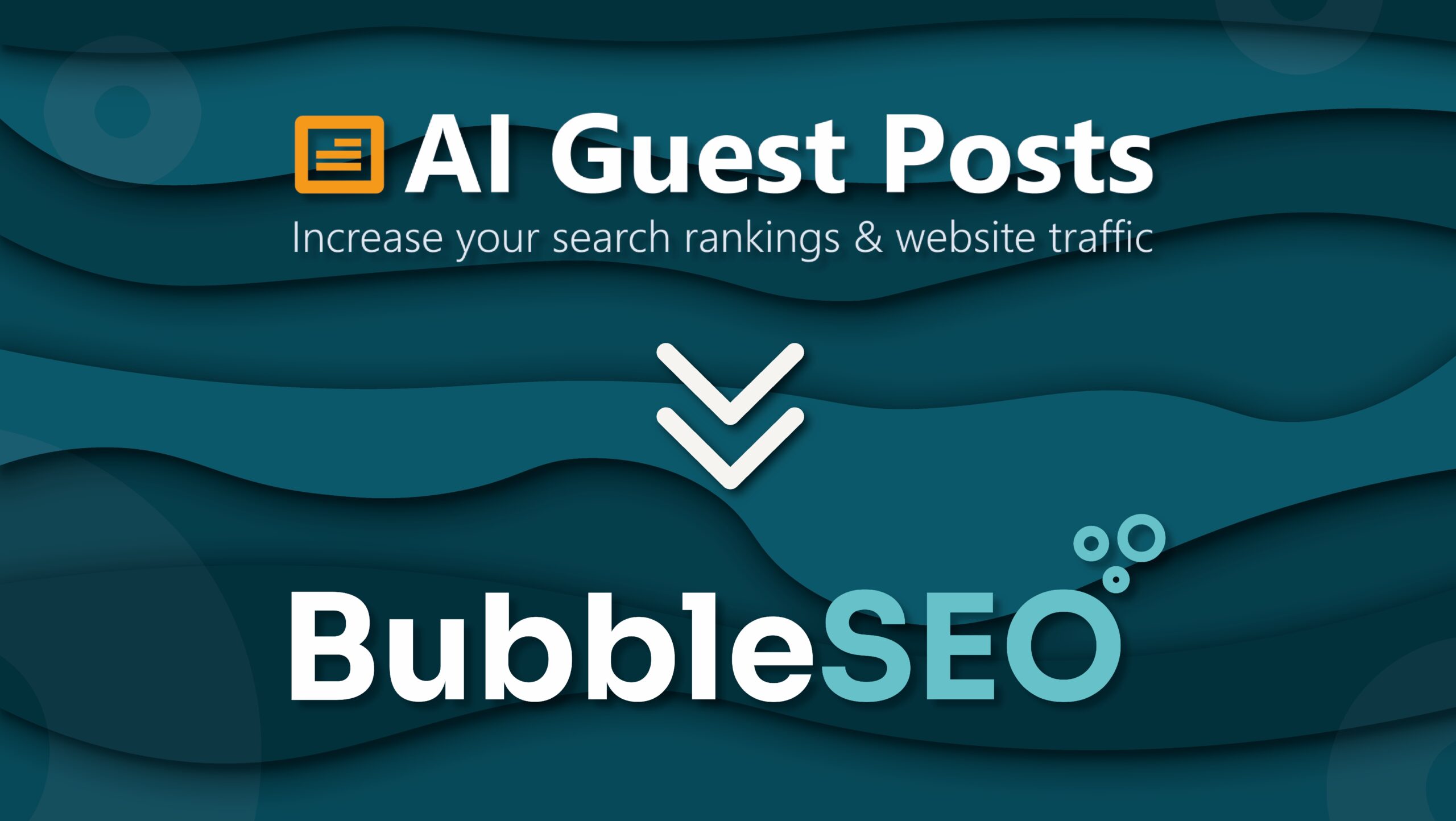
Guest posts are a key tool to help improve your marketing, across many different levels.

Using content marketing within your business has many benefits.

Here are our 5 main reasons why content marketing is such a vital part of your business.
Using content marketing within your business does boost website in many ways including functionality, appearance, and a higher domain authority score. If you can create a good, interesting website for your audience, the more likely they are to revisit your website and trust in your brand. With a better website comes more web traffic, helping you to rank higher in search engines for better visibility.
Having a website that is filled with good quality content suggests a well-established, robust business. Including more helpful, useful, and engaging content for its audience will encourage them to return to the sites. If they are continuously pleased with your business and product, they are more likely to trust your company and buy from you. Search engines also approve of the good quality content and will rank your website at the top of search results for this.
By producing good content marketing and growing your website in a positive direction is a great investment into your business. Not only does it build your brand’s authority and establishes relationships with your audience but, it is your own content. By publishing your own website means you own all the content that belongs their – it is your content assets. Unlike social media marketing, where the platforms are not your own, they do not hold any priority to your content and are run by large corporations who have their own business to grow. (Twitter, Facebook, Instagram, etc.).
By achieving the right content, you will see that there are 2 types of leads that will be looking at your website and targeting these can be managed through SEO.
The two types of leads are the ones who already know about your business and familiar with what you do, and the people who have encountered an issue and needs a solution to it.
By using SEO (Search engine optimisation) you can carefully choose the correct terminology to entice both types of leads. Research keywords and what is popular for both areas and it will help to attract in higher quality leads.
If you have used more traditional marketing techniques in the past you will know that it tends to rely on advertising with a charge. As soon as you stop paying for it, the adverts are no longer their and neither is the visibility of your company. Content marketing costs are more likely to be one initial cost at the beginning, particularly if you invest in SEO or a platform that will publish your content. As soon as your content has gone live, this will then stay online and spread, you don’t have to keep paying for it.
Content marketing, if executed correctly, can have many positive attributes which could then lead to a domino effect through to other aspects of your website, marketing and business strategy. By implementing some key techniques of content marketing, you can make huge benefits to your business, as listed above!
Grow your business online with content marketing solutions from Bubble SEO today.
Place An Order
Improving your SEO profile through backlinks is a crucial aspect of a successful SEO content strategy. Backlinks are one of the most powerful tools in SEO.

We're excited to announce that AI Guest Posts has undergone a transformative rebranding and is now known as Bubble SEO. This strategic move has allowed the business to develop within the digital landscape and highlight our commitment to providing digital marketing solutions tailored to enhance online visibility and engagement for our customers. Bubble SEO remains dedicated to delivering high-quality, targeted content and effective SEO solutions that align with evolving digital marketing trends. Here is a little more information about our brand and its services. Our services: At Bubble SEO, we specialise in three core services, with content writing being a new feature to the website: Guest Posting: Which aims to enhance your online presence with high-quality guest posts on authoritative websites, driving traffic and boosting your SEO rankings. Link Building: Helps build a robust backlink profile with strategic link building services that improve your website's authority and visibility. Content Writing: Provides engaging content for your audience with compelling content tailored to your brand voice and SEO needs. Benefits of Bubble SEO: We have now made changes to the booking process to simplify this, and updated the customer dashboard section in the hope to improve our existing values below: Enhanced Service Quality: With our rebranding comes a renewed focus on delivering top-notch services that exceed your expectations. Improved User Experience: Our new website offers a streamlined interface, making it easier for you to navigate and access our services. Expanded Network: Benefit from our expanded network of partner websites, ensuring broader outreach and better opportunities for your business. Loyalty Rewards: As a token of our appreciation for the continued support of our bookers, we have now introduced loyalty rewards: Exclusive Discounts: Enjoy special discounts as a loyal Bubble SEO customer, with the more points you acquire, the more exciting offers you will unlock. We're thrilled about this new chapter as Bubble SEO and look forward to continuing to be your trusted partner in achieving your digital marketing goals. Stay tuned for more exciting updates and announcements! Discover the new Bubble SEO and elevate your online presence today! Jennifer Hobson – Digital Marketing [email protected] Heather Ryan – Business Development [email protected]

Building high-quality backlinks remains one of the most effective ways to improve your website’s search engine rankings and drive organic traffic. But with ever-evolving algorithms, it’s crucial to adopt strategies that are not only effective but also align with Google’s link-building guidelines. This complete guide breaks down proven link-building strategies that can help your business achieve sustainable growth online. Why Is Link Building Important? Links act as "votes of confidence" for your website. Search engines like Google evaluate these links to determine the authority, relevance, and trustworthiness of your content. A well-executed link-building strategy can: Improve SEO rankings: High-quality backlinks signal credibility to search engines. Increase referral traffic: Links on relevant sites can bring in targeted visitors. Enhance brand visibility: Backlinks expose your brand to wider audiences. 1. Create High-Quality Content Exceptional content is the foundation of any successful link-building campaign. Content that provides value—whether it’s in-depth guides, videos, or infographics—naturally attracts links.Consider investing in data-driven studies, industry reports, or step-by-step tutorials that solve your audience's pain points. Actionable Tip: Use tools like Google Trends and Google Keyword Planner to identify trending topics relevant to your niche. 2. Guest Posting Guest posting remains a staple for link building. By contributing articles to reputable websites within your industry, you not only earn backlinks but also establish yourself as a thought leader.At Bubble SEO, we specialize in crafting engaging guest posts that align with the host site’s audience and guidelines. How to Get Started: Research blogs in your niche using platforms like BuzzSumo or Ahrefs Content Explorer. Pitch topics that add value to their readers while subtly promoting your expertise. 3. Broken Link Building This strategy involves finding broken links on other websites and suggesting your content as a replacement. Not only do you help the site owner fix their links, but you also gain a valuable backlink. Steps: Identify broken links using tools like Check My Links or Ahrefs Broken Link Checker. Reach out to the website owner with a polite email, offering your content as an alternative. 4. Leverage Social Media and Influencers Social media platforms and influencer partnerships can amplify your link-building efforts. While links from platforms like Twitter or LinkedIn are usually no-follow, they drive traffic and encourage natural link generation.Collaborating with influencers can also boost your content’s visibility to a wider, engaged audience. Example: Work with influencers to share your high-value resources, increasing the likelihood of backlinks from their followers' websites. 5. Local Citations and Directories For local businesses, getting listed on relevant directories is an easy win. Ensure your business is added to: Google My Business Yell Trustpilot These citations often come with backlinks and improve your local SEO rankings. 6. Competitor Backlink Analysis Understanding where your competitors get their backlinks can uncover new opportunities. Tools like SEMrush and Ahrefs allow you to analyze their backlink profiles and replicate successful strategies. 7. Participate in Community Forums and Q&A Platforms Contributing to platforms like Quora, Reddit, and niche-specific forums can help you gain backlinks. Focus on providing genuine value rather than spamming links. Conclusion Effective link-building requires a combination of creativity, persistence, and strategy. By focusing on quality over quantity and adopting a diverse range of tactics, you can build a robust backlink profile that drives real results. To learn more about professional link-building services or to discuss a bespoke SEO strategy for your business, visit BubbleSEO. Let’s build better links for a brighter online future!

In the world of content marketing, one of the most powerful yet underutilised tools is the topical map. As SEO becomes more complex, building topical authority is essential for boosting rankings, user engagement, and overall content visibility. A topical map serves as a blueprint that guides content creation, allowing marketers to strategically cover every aspect of a subject to establish authority. In this post, we’ll explore what topical maps are, their main benefits, and how they can transform your content strategy. What is a Topical Map? A topical map is a visual representation of the relationships between different topics and subtopics within a specific content domain. Think of it as a web that connects everything you want to cover about a particular subject. For example, if your central topic is "Digital Marketing," a topical map would include interconnected branches to related subtopics such as "SEO," "Content Marketing," "Social Media," and "PPC." Each of these subtopics would also be broken down further into related concepts, creating a comprehensive framework for content creation. The image below provides an example of what a topical map might look like for the subject of Digital Marketing: The Benefits of Using Topical Maps in Content Strategy 1. Improved Topical Authority and SEO Performance One of the key advantages of using a topical map is that it helps build topical authority, which is crucial for SEO success. Search engines like Google have become increasingly sophisticated in understanding context and relationships between topics. By creating content that thoroughly covers a particular subject through interconnected subtopics, your website signals to Google that it is a credible source of information. This boosts your visibility in search engine results. Topical maps ensure that your content strategy is holistic, covering all relevant angles of a subject, which increases your chances of ranking for a wider array of keywords. For more details on how topical authority impacts SEO, check out this insightful article from Search Engine Journal. 2. Comprehensive Content Planning Creating a topical map makes content planning easier and more strategic. Instead of randomly generating blog posts or articles, you use the topical map to determine exactly what pieces are needed to fully cover a topic. This allows you to fill content gaps, address different user intents, and establish a clear publishing schedule. Using a tool like SEMrush can help you identify the key topics and subtopics that are relevant to your niche, ensuring that your content map is comprehensive. This approach keeps your content organised, reduces redundancy, and provides a clear roadmap for content teams. 3. Enhanced User Experience Topical maps also improve the user experience by allowing visitors to easily navigate through your content. When users land on your website looking for specific information, they are likely to explore related content if it's well linked and logically structured. By interlinking articles that cover different aspects of a subject, you create a seamless content journey that keeps users on your site for longer, reducing bounce rates and increasing engagement. By leveraging structured content interlinking, your users will appreciate the in-depth information provided, enhancing their trust in your brand. For tips on how interlinking can boost SEO and user engagement, refer to this guide by Moz. 4. Maximising Content Relevance and Covering Search Intent A topical map helps ensure that you are covering search intent for every stage of the buyer's journey. Whether users are looking for basic information, in-depth guides, or comparisons, your content needs to be relevant to what they are searching for. By mapping out various content types—from educational blog posts to product guides—you ensure that your website caters to all stages of the customer journey. This comprehensive coverage improves the likelihood that users will find exactly what they need, ultimately boosting conversions and building brand authority. For a deeper understanding of search intent and how to create content that addresses it, take a look at Ahrefs’ guide to search intent. The Role of Keyword Clustering in Topical Maps Keyword clustering is an essential component of building topical maps, as it ensures that related keywords are grouped together to effectively cover each subtopic. Instead of creating isolated content pieces targeting single keywords, keyword clustering helps you create pillar and cluster content that addresses multiple related search terms. How Keyword Clustering Boosts SEO Broader Coverage of Search TermsBy clustering related keywords, you improve your chances of ranking for a range of similar queries. For instance, instead of focusing solely on "content marketing strategies," you can create a cluster that also targets keywords like "content marketing plan," "content strategy examples," and "how to create content for marketing." This broader coverage signals to search engines that your content is thorough and relevant to the entire topic. Improved Content RelevanceWhen you target multiple related keywords within a topic, you enhance the relevance of your content to users and search engines. Using keyword clustering, you create a more interconnected content strategy that aligns with Google's goal of providing comprehensive answers. Tools like Keyword Insights can help you identify keyword clusters based on user intent, ensuring that your content aligns perfectly with what users are searching for. Reduced Keyword CannibalisationKeyword clustering also helps prevent keyword cannibalisation, where multiple pages on your website compete for the same search term. By grouping related keywords and assigning them to a specific piece of content, you avoid this issue and ensure that each page has its own distinct focus. How to Create a Topical Map for Your Content Strategy Building a topical map is a step-by-step process that involves careful research and planning. Here’s a short guide to help you get started: Step 1: Choose Your Main Topic Identify the core topic you want to build authority on. This should be relevant to your industry and of interest to your target audience. For instance, if you’re in the digital marketing space, your core topic could be “SEO Strategies for 2024.” Step 2: Research Subtopics Use keyword research tools such as SEMrush or Ahrefs to identify the most important subtopics related to your main topic. These could include elements like "On-Page SEO," "Technical SEO," "Link Building Strategies," etc. Step 3: Cluster Keywords Group related keywords into clusters based on their relevance to each subtopic. This will help you determine which keywords to target within each piece of content, ensuring you cover all relevant aspects comprehensively. Step 4: Create Pillar and Cluster Content Use the topical map and keyword clusters to create a pillar page—a long, comprehensive piece of content that covers your niche in depth. Develop cluster topics or subtopics that provide detailed information on specific aspects of the main topic. Ensure that all related content is well interlinked. Step 5: Review and Update Regularly Your topical map should not be static. As your industry evolves, update your map to cover new topics, trends, or changes in search intent. Keeping your content fresh and relevant will continue to boost your authority. Conclusion: Harness the Power of Topical Maps and Keyword Clustering Incorporating topical maps and keyword clustering into your content strategy is an effective way to build topical authority, enhance user experience, and boost your overall SEO performance. By providing comprehensive coverage of a subject and strategically creating clusters of supporting topics, you establish yourself as an expert, which in turn improves trust and visibility in search engine results. Start creating your topical map and clustering keywords today to take your content strategy to the next level, and make sure to keep evolving your approach as new trends and topics emerge.

Link building remains an integral aspect of any successful SEO strategy. In the vast digital landscape, securing quality backlinks can significantly boost your website's authority, traffic, and search engine rankings.

SERP stands for Search Engine Results Page. This is the page that a search engine displays to the user when they submit a search query. For example, if you go to Google and type in ‘what is martech?’ and press enter or click the search emblem, the search engine results page (or SERP) will be the pages that are returned to you.